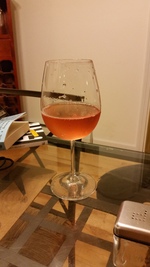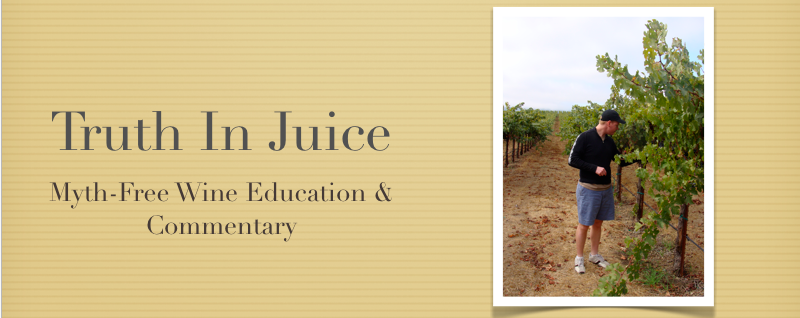Finger Lake Reds: Evidence of Adventure in American Wine Consumption
 Monday, July 21, 2014 at 12:36PM
Monday, July 21, 2014 at 12:36PM  Since I began writing this blog, one of my foremost goals has been to challenge everyday perceptions of wine, and alert adventurous palates to new wine experiences. Over the last few years, I have been pleased to see evidence that American wine consumers are letting go of old stereotypes, and are allowing their palates to go on a journey. Five years ago, it was a challenge to convince most American wine consumers that rosé was not the same thing as White Zinfandel, and was a dry, refreshing summer wine worth exploring. Today, dry rosé can be found on most supermarket shelves, which unequivocally speaks to the fact that many American wine consumers are abandoning their prejudicial views of pink wines.
Since I began writing this blog, one of my foremost goals has been to challenge everyday perceptions of wine, and alert adventurous palates to new wine experiences. Over the last few years, I have been pleased to see evidence that American wine consumers are letting go of old stereotypes, and are allowing their palates to go on a journey. Five years ago, it was a challenge to convince most American wine consumers that rosé was not the same thing as White Zinfandel, and was a dry, refreshing summer wine worth exploring. Today, dry rosé can be found on most supermarket shelves, which unequivocally speaks to the fact that many American wine consumers are abandoning their prejudicial views of pink wines.
However, despite the fact that Americans are becoming more adventurous in their choice of wines, many stereotypes still persist. One of the stereotypes that I find most frustrating is that wines from certain geographies are written off, without a second though, because they are not thought to be premier wine growing locations. While California, Oregon, and Washington are universally recognized as the premier wine growing locations in the U.S., all 50 states in the U.S. produce wine, and I'm willing to bet that if you were to sample a few from each state, you'd find something appealing. Being from the Northeast, I find it especially maddening when consumers write off the red wines of the region with cliché phrases like:
- "Vermont is beautiful, but it's a beer state. The wines aren't worth your time."
OR
- "Riesling from the Finger Lakes is delicious, but it's climate is too cold to produce any good red wines."
In a more distant time, these phrases might have been worthy of merit. However, today, quality red wines can be found all over the Northeast. Climate change, and research into cold-hardy red varietals have revolutionized red wine production in Northeast states such as Vermont and New York. I previously wrote about the success that Vermont wineries such as Shelburne Vineyards and Lincoln Peak were having with the French-American hybrid grape, Marquette. In New York, where the climate is slightly warmer, the Finger Lakes, the Hudson Valley, and Long Island are producing tremendous wines from true vitis-vinifera grapes such as Pinot Noir, Merlot, Cabernet Franc, and Cabernet Sauvignon. I've noted my affinity for New York State red wines many times. Whitecliff Vineyards' Pinot Noir is tremendous, and I was pleasantly surprised by the red wines from the Finger Lakes that I encountered at the Killington Wine Festival in July 2012.
While many wine consumers think exclusively of Riesling when they think of the Finger Lakes, the region is at the heart of the vitis vinifera revolution, thanks to Dr. Konstantin Frank, who grafted vinifera vines on to American rootstock. However, while I was very impressed with the quality of the Red Newt Cellars red wines that I tasted at the Killington Wine Festival, I was not impressed with their price point. While I'm not opposed to paying $50/bottle for certain wines on occasion, it's definitely not what I want to be spending for a wine everyday. After tasting the reds from Red Newt Cellars, I talked to representatives from Fox Run Vineyards - another stellar Finger Lakes winery - who told me that while they produced several red wines, they had not brought any to the festival, because they were unable to distribute them in Vermont.
Although I was thoroughly disappointed at not being able to taste the Fox Run Vineyard reds at Killington, I remained in touch with the folks at Fox Run, and through their generosity, I was able to taste 4 of the winery's reds. The great thing about Fox Run's red wines is that with the exception of their Meritage and the Cabernet Franc Reserve, none of them will cost you more than $25. It's just a matter of being able to find the wines. Fox Run provides a list of locations (both restaurants and retail stores) that sell/serve their wines, but not all of these locations carry their reds. However, if my tasting experience is any indication, these are definitely wines that are worth trying. They may not be household names just yet, but remember, it was once a struggle to convince most wine consumers to try dry rosé. Be an adventurer, and try Finger Lake reds before they hit the main stream. You can thank me later.
A Review of Fox Run Vineyard Red Wines
 2008 Cabernet Franc/Lemberger: You may have heard of Cabernet Franc, but it's perfectly alright if you haven't heard of Lemberger, which is another name for Blaufränkisch. Blaufränkisch is a workhorse grape in Austria and Germany, where it produces spicy, tannic wines that are frequently compared to Pinot Noir. In the Finger Lakes, under the care of Fox Run winemaker Peter Bell, the Lemberger is blended in equal parts with the Cabernet Franc, creating a light-bodied wine, with aromas of smoky red fruits on the nose, and bright red cherry flavors on the palate. Perfect on it's own, it also makes for a great pairing with grilled meats, and hard cheeses.
2008 Cabernet Franc/Lemberger: You may have heard of Cabernet Franc, but it's perfectly alright if you haven't heard of Lemberger, which is another name for Blaufränkisch. Blaufränkisch is a workhorse grape in Austria and Germany, where it produces spicy, tannic wines that are frequently compared to Pinot Noir. In the Finger Lakes, under the care of Fox Run winemaker Peter Bell, the Lemberger is blended in equal parts with the Cabernet Franc, creating a light-bodied wine, with aromas of smoky red fruits on the nose, and bright red cherry flavors on the palate. Perfect on it's own, it also makes for a great pairing with grilled meats, and hard cheeses.
2009 Lemberger: On its own, the Lemberger shows a much more gamey, earthy character. The aromas of blackberry and raspberry are intertwined with a certain muskiness, not uncommon to Austrian Blaufränkisch or even an entry level Burgundy. It displays much more weight and body than the Cabernet Franc/Lemberger, with jammy, yet bright bing cherry flavors with a hint of pepper and spice on the finish.
2009 Cabernet Franc: The Cabernet Franc has the varietal's hallmark notes of bell pepper and dark fruit on the nose, but is blended with 20% Cabernet Sauvignon, which provides an added dimension of coffee and dark chocolate. Red fruit and licorice flavors dominate the soft, silky palate, which shows very little in the way of tannins.
2010 Merlot: Tasted blind, I'm not sure that many people would identify this as a Finger Lakes red. This is classic Merlot. Due to the cooler climate, its alcohol content (12.0%) is a little lighter than most Merlots on the market today, but its aromas of plum, blackberry, and other dark fruits are quite pronounced. On the palate, its rich, jammy, fruit flavors intermingle with a balanced tannic structure, making this a great wine to pair with red meats.



Reader Comments